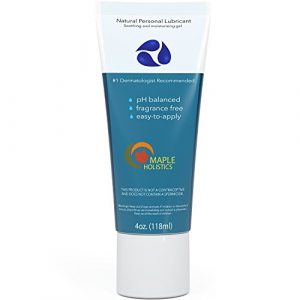Lube And You: What You Need To Know About Your Lubricant

In many cases, additives and preservatives of varying kinds are added to lubes. This is done in order to add specialty features to certain lubes, or alternatively to heighten the sensation involved in using them. Some additives and preservatives are potentially harmful, while others are perfectly harmless. Which is why we need to discuss lube and you.
If you are very susceptible to allergies or infections – this goes double for women – it is best to stay away from any “specialty” lubes that are flavored, scented, containing spermicidal chemicals, etc. Keep to natural, plain, water based lubes which do not contain any fancy ingredients.
Water-Based Lube Ingredients

What you need to know about water-based lube ingredients.
- Glycerin – a substance which is used in many industries: pharmaceutical, cosmetic, medical, culinary, and others. It is a chemical compound which is non-toxic, colorless, odorless, and sweet-tasting.
- Hydroxyethyl cellulose – used in many cosmetics and cleaning products, this substance is a gelling agent. It is water soluble, provides thickness, and forms films. Chlorhexidine gluconate – antiseptic agent with antibacterial activity Glucono delta-lactone – a preservative substance which can be synthesized in a laboratory or produced by bacteria from sugar. It is used a food additive (E575). Methylparaben – a preservative. Part of the paraben group of preservatives. A few word on parabens:
These preservatives have been around since the 1950’s. There is an ongoing debate in the scientific community as to the potential harm that could be caused by long-term use of products which contain them. They are used in many industries, and very prevalent in the cosmetics industry. Over 80% of cosmetics sold in today’s market contain some form of parabens or paraben compound.
- Propylparaben – Another preservative from the parabens group. A naturally occurring substance that is more often synthesized in a laboratory. It is used as a food additive (E216) in foods and beverages, but is also found in cosmetics and pharmaceutical products. Sodium hydroxide – A water soluble substance, used as a chemical base for soaps, detergents, textiles. It is colorless, odorless, and is used in personal lubricants to control acidity. A very diluted amount is used in lubes, since in its pure form it can cause chemical burns when applied to the skin. Propylene glycol – a somewhat-thick chemical. It is a colorless liquid, with a faintly sweet taste and odor, which mixes well with water. It has the E number of E1520, and is used as a warming agent in water-based lubes. Sorbitol – a sweet sugar alcohol. It is usually made from corn syrup, but can also be derived from fruit such as apples and pears. Sorbitol is used in several industries: medical, culinary, and cosmetic.
Silicone-Based Lubes Ingredients
Silicon is a natural element, symbolized on the periodic table of the elments by the letters Si and the atomic number 14. Silicone, on the other hand, is a product made from silicon. It comes in many forms, shapes, and sizes, and is used in countless industries for countless purposes. Plain silicone lubes usually contain between two and four ingredients, being a mixture of two or more kinds of silicone. Common ingredients include:
- Dimethicone (silicone oil) – a more dense type of silicone. In higher quality lubes, it will appear as the first ingredient.
- Cyclomethicone – a liquid silicone which is used as a skin softener. Unlike Dimethicone, this substance is not as dense and can evaporate over time.
- Cyclopentasiloxane – a colorless liquid silicone which is also used in many other silicone products such as deodorants, hair care products, and sun blocks. Like the cyclomethicone, it is considered an emollient – skin
Oil-Based Lube Ingredients
- Cocoa butter – an edible vegetable fat produced from the cocoa bean. It is used in foods, ointments, and pharmaceuticals.
- Shea butter – extracted from the nuts of the shea tree, located in Africa. This substance has a high content of fatty acids, vitamins, unsaturated fats. It is used for a wide range of lotions and salves, both medical and cosmetic
- Sweet almond oil – this oil contains lots of vitamins and fatty acids, including vitamin E which is a natural skin conditioner. It helps heal skin and moisturize it.
- Sunflower oil – made from the sunflower seeds, this substance is used – amongst other things – for cooking, and it famous for being a frying oil. Sunflower oil has omega-3 and omega-6 fatty acids. In the cosmetics industry, it is used as an emollient. It makes skin softer and increases hydration.
- Coconut oil – a substance which is produced from the coconut. The oil is high in fatty acids, which makes it very easy on the skin. It is used as a moisturizer, and is present in many cosmetics products.
What To Avoid In Lubricant

Using a natural lube, without any harmful chemicals, is recommended.
For those with sensitive skin, or those seeking to introduce less potentially-harmful chemicals into their system, there are some ingredients (all of which are mentioned above) that are best avoided. These include:
- Parabens
- Petro-based jellies
- Silicone oils
- Glycerin
- Glucose
- Propylene glycol
- Chlorhexidine
Even if you haven’t had problems with other kinds of lubes which contain these products, it is never a good idea to introduce so many chemicals into your body.
Again, the safest choice– whether you have sensitive skin or not – is to use a water-based personal lubricant, which uses as little additives as possible, is paraben-free, and contains some sort of skin moisturizer such as Aloe Vera, to protect the skin and ease the sexual activity.

